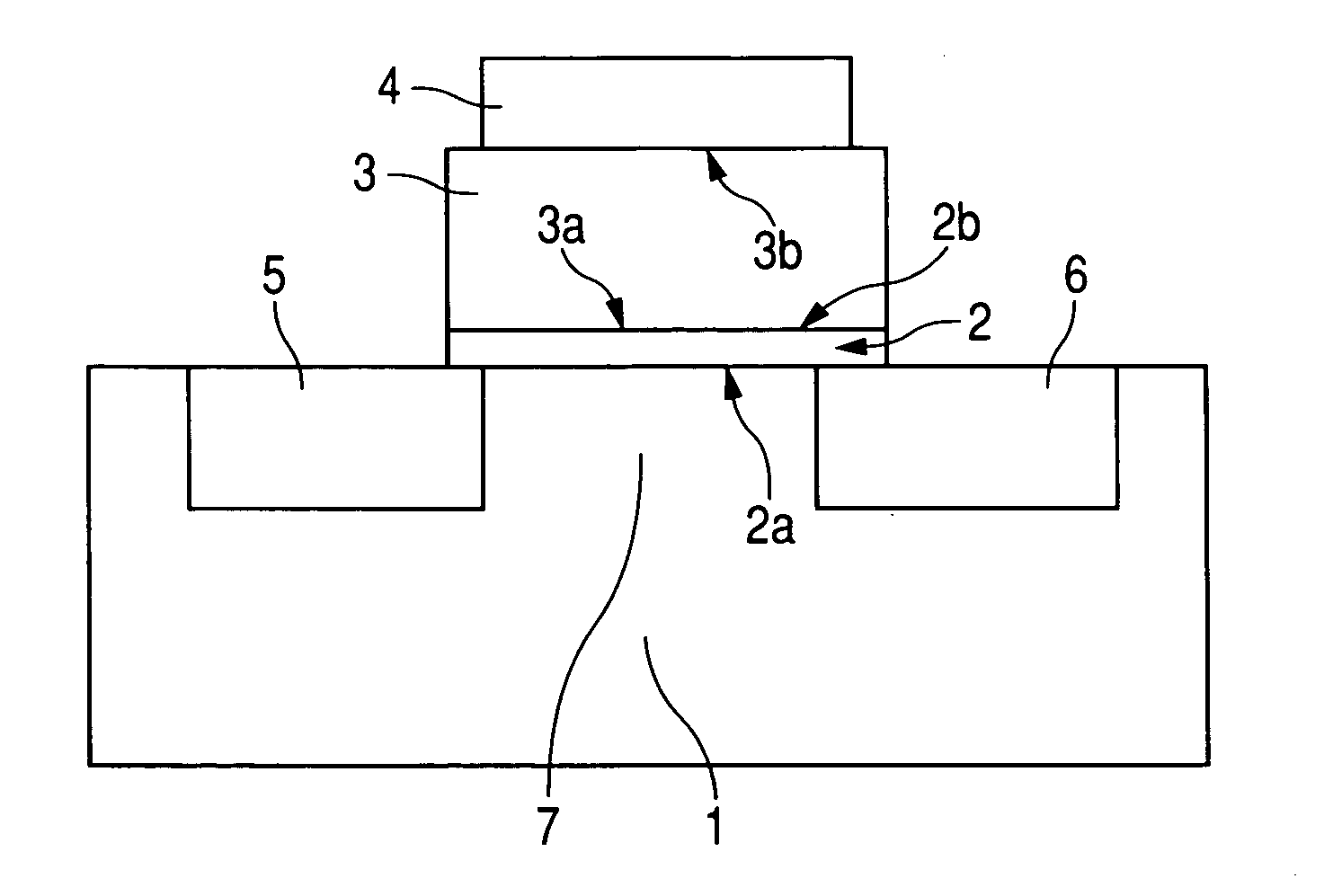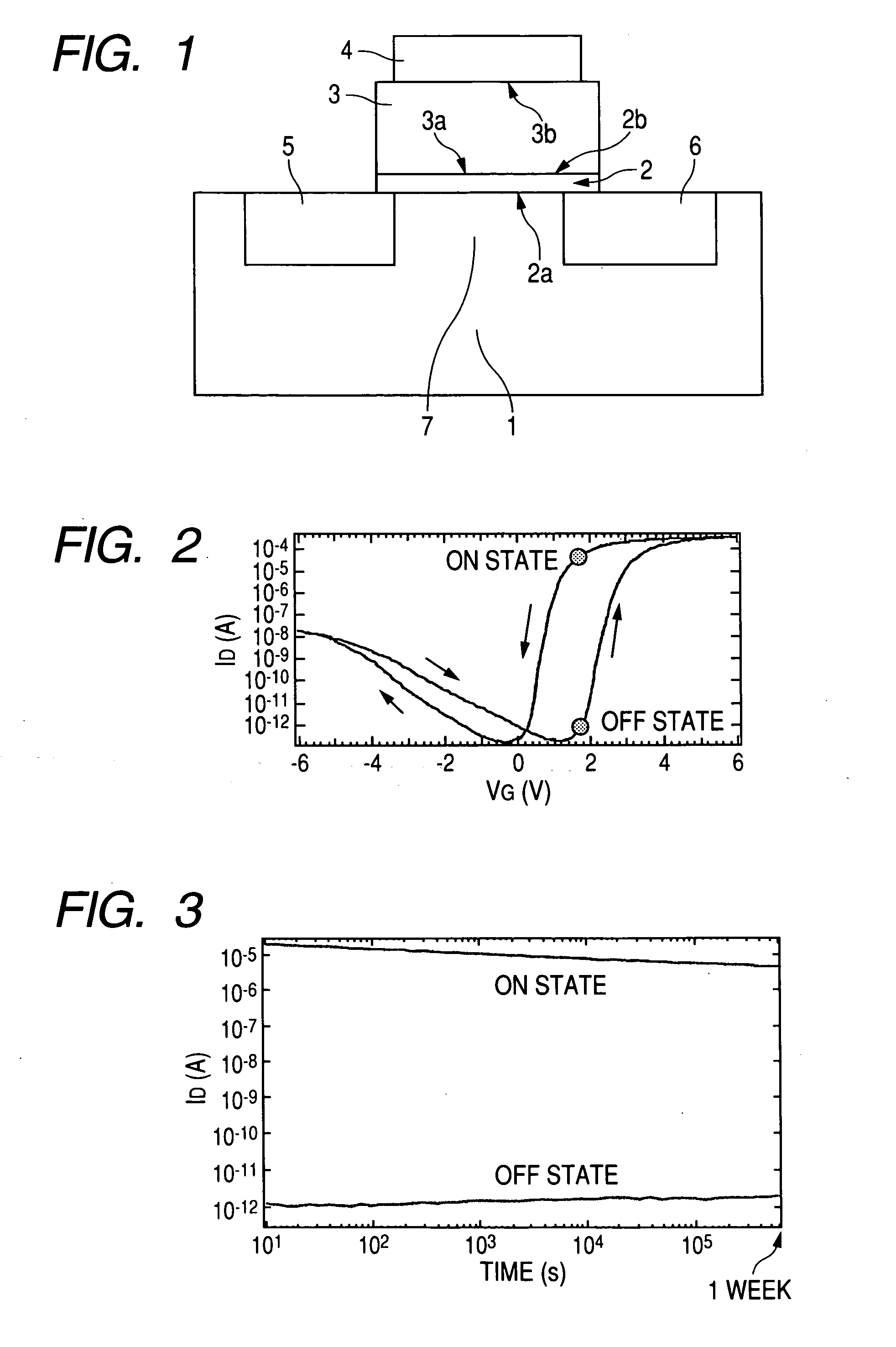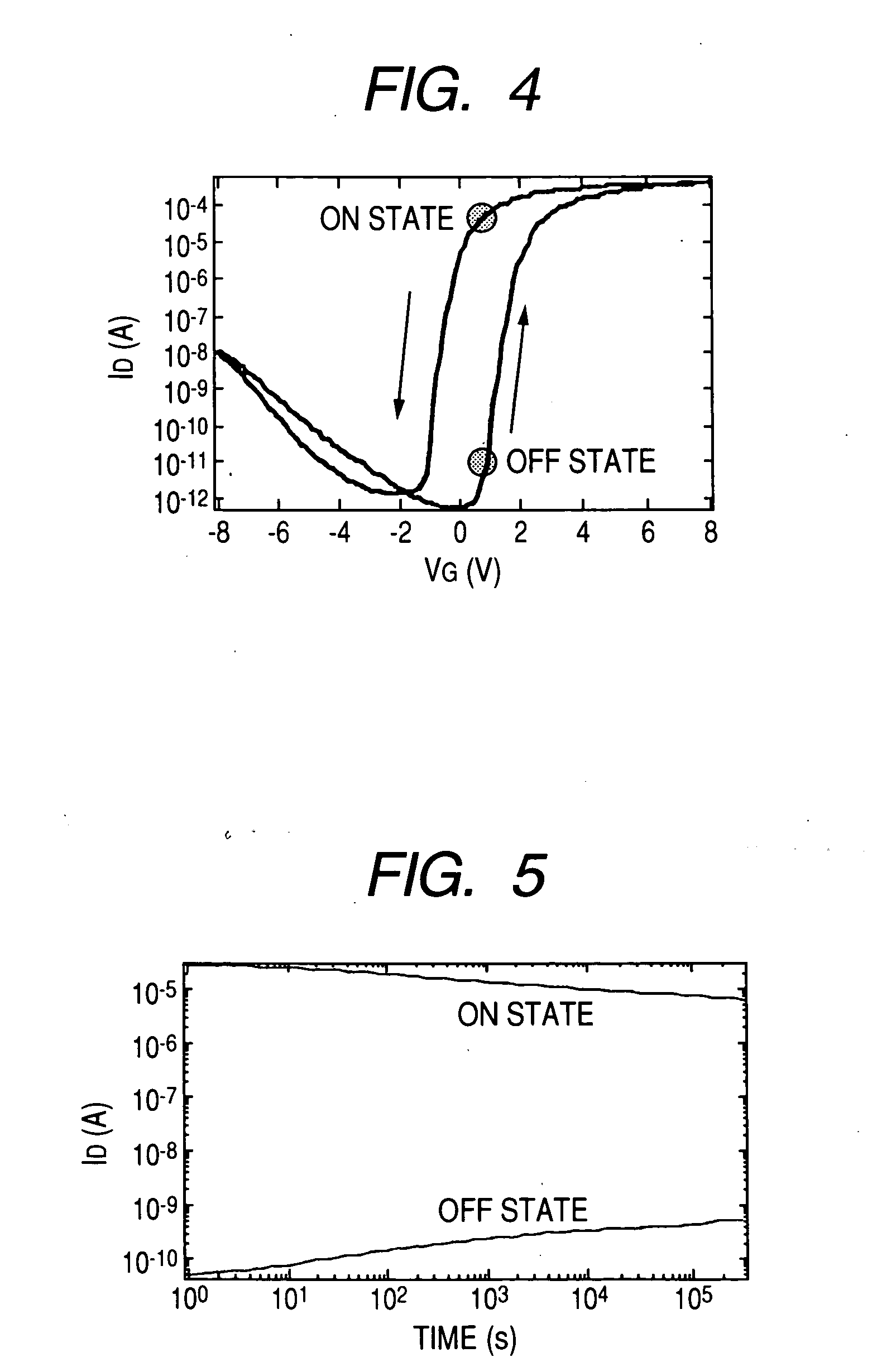Semiconductor-ferroelectric storage device and its manufacturing method
a technology of ferroelectric storage and semiconductors, applied in vacuum evaporation coatings, chemical vapor deposition coatings, coatings, etc., can solve the problem of inability to control the electrical conduction between the source and drain of the transistor, the electric polarization of the ferroelectric, etc., to improve crystallinity and ferroelectricity, reduce leakage current, and improve the effect of temperatur
- Summary
- Abstract
- Description
- Claims
- Application Information
AI Technical Summary
Benefits of technology
Problems solved by technology
Method used
Image
Examples
example 1
[0058] The materials used and the thicknesses thereof are as follows. [0059] Semiconductor substrate 1: Si [0060] Insulator buffer layer 2: Hf1−xAl2xO2+x+y; x=0.25; y=0; thickness of 10 nm [0061] Ferroelectric film 3: SrBi2Ta2O9; thickness of 400 nm [0062] Gate electrode 4: Pt; thickness of 200 nm; gate length (length of distance from source region to drain region) of 10 μm [0063] Conductivity type of source region 5 and drain region 6: n-type [0064] Conductivity type of region 7: p-type
[0065] Hf1−xAl2xO2+x+y (x=0.25; y=0) as an insulator buffer layer 2 was formed by pulsed-laser deposition. The laser used was a KrF excimer laser. The laser energy was 250 mJ per pulse, the pulse repetition frequency was 2 Hz, and the deposition time was 270 seconds. The temperature of the substrate was 200° C. The introduction gas was a nitrogen / oxygen mixed gas, in which the molar ratio N:O was 1:10−6. The pressure of this introduction gas in the deposition chamber was 0.1 Torr (13.33 Pa). SrBi2Ta...
example 2
[0067] The materials used and the thicknesses thereof are as follows. [0068] Semiconductor substrate 1: Si [0069] Insulator buffer layer 2: HfO2+u; u=0; thickness of 10 nm [0070] Ferroelectric film 3: SrBi2Ta2O9; thickness of 400 nm [0071] Gate electrode 4: Pt; thickness of 200 nm; gate length (length of distance from source region to drain region) of 10 μm [0072] Conductivity type of source region 5 and drain region 6: n-type [0073] Conductivity type of region 7: p-type
[0074] HfO2+u (u=0) as an insulator buffer layer 2 was formed by pulsed-laser deposition. The laser used was a KrF excimer laser. The laser energy was 250 mJ per pulse, the pulse repetition frequency was 2 Hz, and the deposition time was 270 seconds. The temperature of the substrate was 200° C. The introduction gas was a nitrogen / oxygen mixed gas, in which the molar ratio N:O was 1:10−6. The pressure of this introduction gas in the deposition chamber was 0.1 Torr (13.33 Pa). SrBi2Ta2O9 corresponding to a ferroelectr...
examples 3 to 7 and reference example
[0083] Transistors of Examples 3 to 7 were produced under completely the same conditions as in Example 1 and Example 2, except for the composition x in the insulator buffer layer. The values of x were: x=0.05 in Example 3, x=0.12 in Example 4, x=0.48 in Example 5, x=0.68 in Example 6, and x=0.85 in Example 7. Furthermore, a transistor employing a material in which x=1, i.e., Al2O3, as an insulator buffer layer was also produced as Reference Example. The gate voltage was swept and the drain current was measured to determine the memory window width of the MFIS transistor. The sweep gate voltage was conducted under the same conditions of ±6 V. The results thereof are shown in FIG. 11 together with the results in Example 1 and Example 2. The numerals in FIG. 11 correspond to the Example numbers. R in FIG. 11 indicates Reference Example. When x is equal to 0 or is in the range of from above 0 to below 0.7, memory window widths of 1 V or larger were obtained. A gate voltage VG of 7 V was ...
PUM
| Property | Measurement | Unit |
|---|---|---|
| molar ratio | aaaaa | aaaaa |
| thickness | aaaaa | aaaaa |
| thickness | aaaaa | aaaaa |
Abstract
Description
Claims
Application Information
 Login to View More
Login to View More - R&D
- Intellectual Property
- Life Sciences
- Materials
- Tech Scout
- Unparalleled Data Quality
- Higher Quality Content
- 60% Fewer Hallucinations
Browse by: Latest US Patents, China's latest patents, Technical Efficacy Thesaurus, Application Domain, Technology Topic, Popular Technical Reports.
© 2025 PatSnap. All rights reserved.Legal|Privacy policy|Modern Slavery Act Transparency Statement|Sitemap|About US| Contact US: help@patsnap.com



